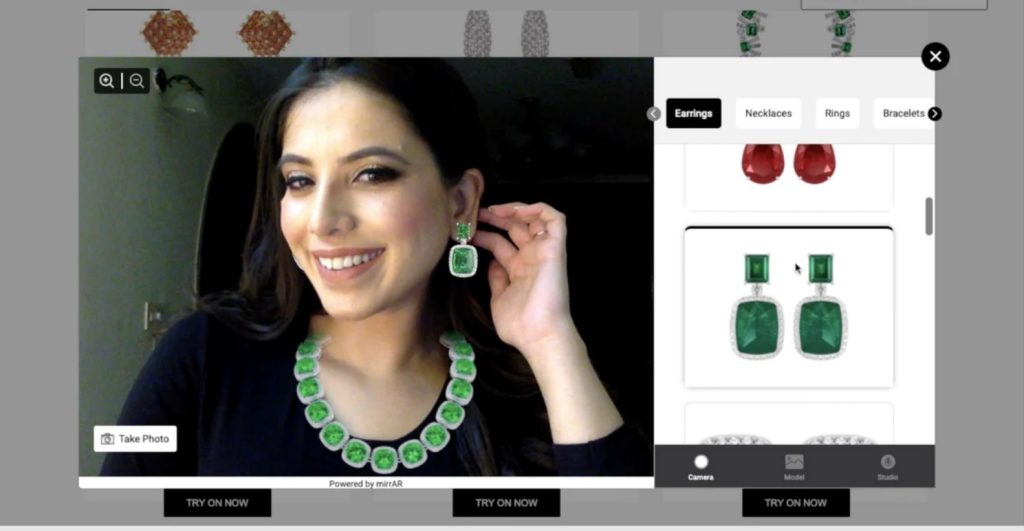The landscape of marketing has continually evolved, propelled by technological advancements that revolutionize the ways brands engage with their audiences. One such groundbreaking innovation that has transformed marketing strategies is Augmented Reality (AR), specifically its integration into web-based platforms, known as Web AR. In this blog post, we will delve into the realm of Web AR solutions, exploring its nuances, benefits, applications in marketing, implementation strategies, and successful case studies that highlight its transformative potential.
Understanding Web AR
AR software, often associated with immersive experiences in apps, has now found its way onto the web through Web AR. Unlike traditional AR applications that require dedicated software or apps, Web AR enables augmented experiences directly through web browsers, making it accessible to a broader audience. This technology overlays digital information onto the physical world in real-time, enhancing user experiences in an interactive and engaging manner.
Benefits of Web AR in Marketing
The incorporation of Web AR into marketing strategies offers a plethora of advantages. Firstly, it amplifies user engagement by creating captivating experiences that go beyond conventional methods. The immersive nature of Web AR drives deeper connections between brands and consumers.
Moreover, Web AR facilitates personalized experiences, allowing businesses to tailor interactions based on individual preferences. This personal touch enhances brand-consumer relationships and fosters a sense of connection and loyalty.
Accessibility and convenience are also pivotal benefits of Web AR. By eliminating the need for users to download specific applications, Web AR experiences become more accessible, increasing the likelihood of engagement.
Applications of Web AR in Marketing
Web AR’s versatility opens avenues for diverse marketing applications. One notable application is product visualization. Companies leverage Web AR to enable customers to virtually interact with products before making purchase decisions. This not only boosts consumer confidence but also reduces returns, as customers have a clearer idea of what to expect.
Interactive advertising is another powerful application. Brands create immersive advertisements that users can engage with, amplifying brand recall and fostering a memorable experience.
Furthermore, the integration of gamification into marketing campaigns through Web AR has proven highly effective. By gamifying interactions, businesses enhance user participation, encouraging them to spend more time engaging with the brand.
Implementing Web AR Strategies
To effectively leverage Web AR in marketing, understanding the target audience is paramount. Knowing their preferences and behaviors allows for the creation of relevant and engaging experiences.
Collaboration with experienced AR developers is essential. Skilled professionals can help conceptualize and execute compelling Web AR experiences aligned with marketing objectives.
Measuring the success of Web AR campaigns involves tracking various metrics and analytics. This data-driven approach helps in assessing the campaign’s performance and ROI, allowing for adjustments and improvements.
Case Studies
Several brands have successfully implemented Web AR in their marketing endeavors. IKEA’s “Place” app, allowing users to visualize furniture in their homes, is a stellar example. This initiative boosted customer confidence and streamlined the purchasing process.
Another remarkable case study is the use of Web AR by cosmetic brands like L’Oreal and Sephora. By enabling customers to virtually try on makeup products through their smartphones, these brands enhanced user engagement and increased conversions.
Conclusion
The evolution of marketing through technology continues to reshape the ways businesses connect with their audiences. Web AR stands at the forefront of this evolution, offering unparalleled opportunities for brands to create immersive, personalized, and memorable experiences for consumers.
As we move forward, embracing innovation and integrating Web AR into marketing strategies will not only set businesses apart but also pave the way for deeper and more meaningful interactions between brands and consumers. The transformative potential of Web AR in marketing is vast, promising a future where boundaries between the digital and physical worlds blur seamlessly.
Are you ready to unlock the potential of Web AR for your marketing initiatives? Explore how Web AR can elevate your brand’s engagement and set you apart in today’s competitive landscape. Reach out to experts, brainstorm ideas, and take the first step towards leveraging this innovative technology to transform your marketing strategies.



